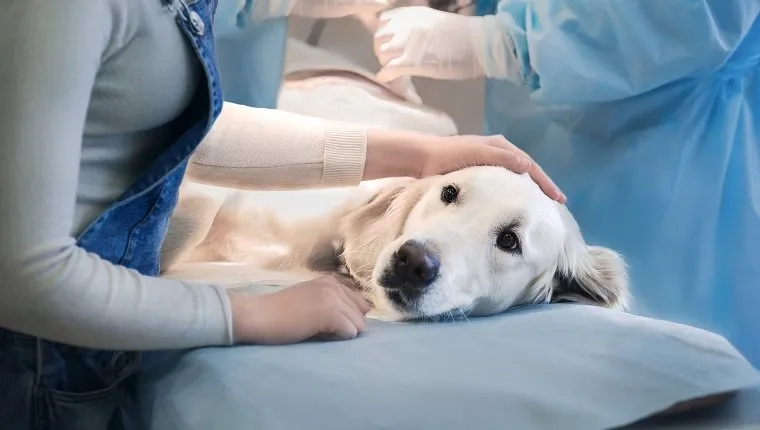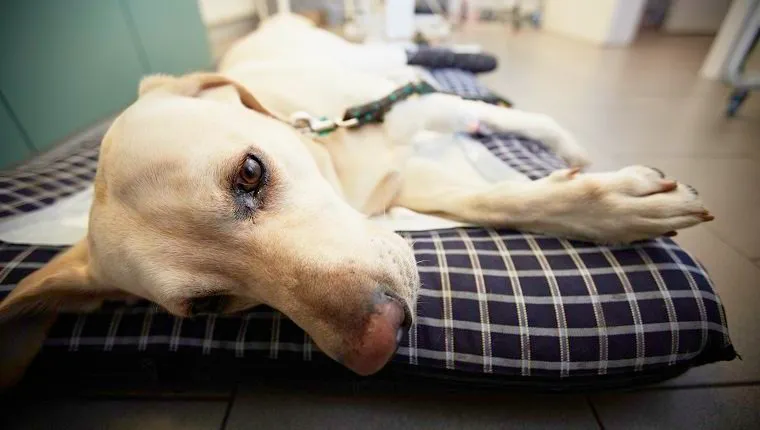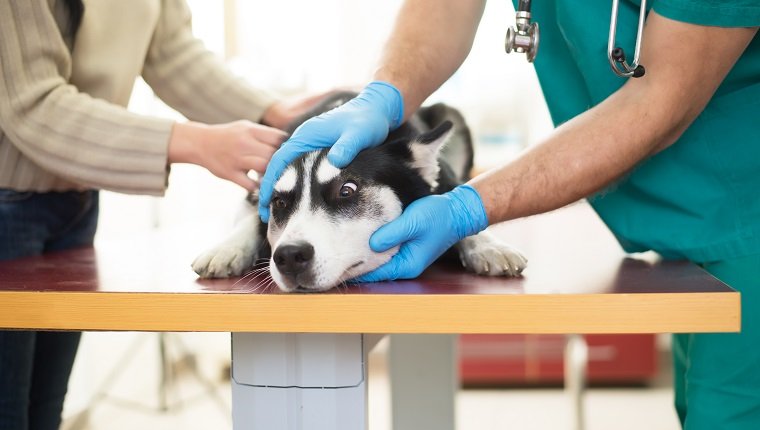Leukemia in dogs is a form of cancer that results in an increased white blood cell count in the blood stream and bone marrow. It can be acute or chronic with the acute form being more malignant.
There are two main types of canine leukemia. Lymphocytic leukemia is caused by cancerous cells in the lymph nodes, and myelogenous leukemia is caused by cancerous cells in the bone marrow.
Symptoms in dogs may worsen, and the condition can result in death if it goes untreated. If you see the signs in your dog, you must consult your veterinarian right away.
Here’s what you should know about the symptoms, causes, and treatments for leukemia in dogs.
Symptoms Of Leukemia In Dogs

The symptoms of leukemia in dogs will vary depending on the type and whether the condition is acute or chronic.
Acute canine leukemia symptoms worsen quickly and must be treated immediately. It tends to affect middle-aged to older dogs after the age of six.
Here are some symptoms of acute leukemia that you should look out for:
- Pale gums
- Pale or white color in the tongue
- Lack of appetite or weight loss
- Weakness
- Fever
- Vomiting
- Increased thirst or dehydration
- Irregular breathing and heart rate
- Lethargy
- Bruising or bleeding easily
- Recurring infections or delayed healing
- Chronic diarrhea
- Lameness
- Aggression or behavioral changes
Symptoms of chronic leukemia may not be as easy to spot at first, as the condition can take months or even years to fully develop. Some dogs show no signs at all when they receive a diagnosis.
Many times the condition is discovered through routine blood work, which is another reason that it’s important to get regular check-ups with your veterinarian. Usually this affects senior dogs ten years old or older.
Here are a few symptoms that might appear with chronic leukemia, which tend to worsen with time:
- Lethargy
- Loss of appetite
- Anemia
- Swelling in the lymph nodes
- Enlargement of the spleen
- Bruising or bleeding easily
These symptoms are similar to other forms of cancer, autoimmune disease, and other conditions, so it’s important to see your vet for a proper diagnosis so treatment can begin quickly.
Causes Of Leukemia In Dogs

The causes of leukemia in dogs are not well understood. Most of the time, veterinarians believe it develops spontaneously from a mutation in the bone marrow.
Certain factors can, however, create an increased risk of the development of the condition. These include exposure to radiation, certain viral infections, and exposure to toxic chemicals.
Because the causes are not known, there are no reliable means of preventing the condition from developing in dogs.
Treatments For Leukemia In Dogs

Many cases of leukemia in dogs can be treated or managed, but it’s rare that the condition is cured. The goals of treatment are usually to restore proper white blood cell production, reduce symptoms, and relieve discomfort.
Chemotherapy is the standard treatment for canine leukemia, and while it does not cure the condition, it can put the cancer into remission or slow its growth.
Acute leukemia is more likely to be fatal than chronic leukemia, and it requires immediate and aggressive care. Usually this includes intravenous fluids, antibiotics, and blood transfusions if the dog has anemia. A dog may need a feeding tube if they can’t eat on their own.
Some of the chemotherapy drugs that might be used to treat acute leukemia are prednisone, vincristine, cyclophosphamide, L-asparginase and doxorubicin.
Chronic leukemia may not even require treatment at first. It will, however, need strict monitoring. As the condition worsens, a vet may start administering oral chemotherapy drugs, which can include prednisone, chlorambucil, and cyclophosphamide.
If the cancer spreads to other areas of the body, the dog may need more aggressive treatment, such as intravenous chemotherapy.
Supplements, dietary changes, and alternative medicine will not cure leukemia, but they can help in strengthening your dog’s immune system, which can prevent secondary infections that your dog may be susceptible to due to the chemotherapy or the leukemia, itself.
You should consult your vet to see how these changes may interact with prescribed treatment.
Does your dog suffer from leukemia? How do you treat it? Let us know in the comments below!









